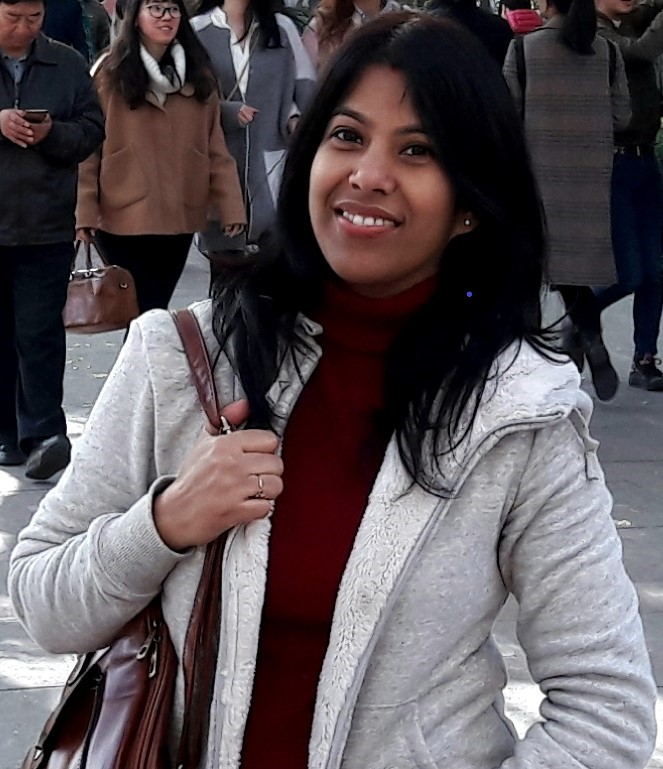Course Name:Plant Genomics
Still no participant
Still no reviews
•Deciphering the genetic makeup and protein population in an organism are among the elementary approaches in biological sciences.
•To provide an understanding in genomics and proteomics and, the different approaches and techniques employed in these fundamental fields of study.
| COs | Course outcomes | Mapping COs with POs (High-3, Medium-2, Low-1) |
| CO1 | Understand various omics approaches and their role in understanding plant function | PO1-3, PO2-3, PO3-3, PO4-2, PO5-2 |
| CO2 | Experiments to understand plant function | PO1-3, PO2-3, PO4-2, PO5-2 |
| CO3 | Analyze the information from plant genomic research and recognize its potential applications in crop improvement | PO1-3, PO2-3, PO3-3, PO4-2, PO5-3 |
| CO4 | Design and develop experiments to understand and manipulate plant function | PO1-3, PO2-3, PO3-3, PO4-2, PO5-2 |
Module I
Genome organization: Introduction to genomics, Brief overview of prokaryotic and eukaryotic genome organization, Extra-chromosomal DNA: bacterial plasmids, Mitochondrial and chloroplast genomes
Module II
Genome mapping: Molecular Mapping of Genome: Genetic mapping-linkage analysis, Choice of mapping populations, markers for genetic mapping; Physical mapping-tools for physical mapping of genes, cytogenetic maps.
Practice 1: Demonstration of gene mapping
Module III
Genome sequencing: Chemical (Maxim and Gilbert's degradation method) methods of DNA sequencing; Genome sequencing strategies-Whole genome, clone-by-clone and hybrid approaches. Next generation sequencing technologies-454, Illumina, ABI SOliD, single molecule and nanopore sequencing. Human Genome Sequencing Project, Genome sequencing projects for plants (Rice, Arabidopsis)
Practice 2: Demonstration of web tools for genome analysis
Module IV:
Comparative genomics: Whole genome comparison; Tandem and segmental duplication; DNA based phylogenetic trees; Identification and classification of organisms using 16S rRNA typing/sequencing.
Practice 3: Phylogenetic analysis using genomic tools
Module V
Transcriptomics: Global gene expression strategies-Northern blotting, Serial Analysis of Gene Expression (SAGE), Massively Parallel Signature Sequencing (MPSS), Microarray-construction of microarrays-genomic arrays, cDNA arrays and oligo arrays, Transcriptome profiling.
Practice 4: RNA Isolation
Module VI
Proteomics: Protein interactions; DNA – protein Interactions, yeast two-hybrid systems; affinity tagging, pathway building. 2D-PAGE, isoelectric focusing, mass spectrometry, MALDI-TOF, LC-MS; Proteome databases; Protein sequencing: N-terminal sequencing- Ninhydrin test, Sanger’s method, Edman degradation; C-terminal sequencing-types of reducing agents; functional protein microarrays.
Practice 5: Protein separation using SDS-PAGE (Demonstration through virtual labs)
Module VII
Metabolomics: Introduction to metabolomics: Metabolome, Metabolite profiling, Metabolome fingerprinting, Role of Biomarker in metabolomics, Techniques for metabolome analysis.
Practice 6: Isolation of secondary metabolites using Soxellate apparatus
Text books
Brief overview of prokaryotic and eukaryotic genome organization
https://www.youtube.com/watch?v=IQR7Fk5b8z8
https://www.youtube.com/watch?v=MsQHwXfYkAs
Extra-chromosomal DNA: bacterial plasmids, Mitochondia and Chloroplast genomes
https://www.youtube.com/watch?v=SdqJFA6mOkI
Linkage analysis, Choice of mapping populations, markers for genetic mapping
Methods and techniques used for genetic mapping; Physical mapping- tools for physical mapping of genes, cytogenetic maps.
Practice
Demonstration of genetic mapping
https://www.youtube.com/watch?v=ZeATszO-6e0&t=33s
Chemical (Maxim and Gilbert’s degradation method) and enzymatic (Sanger’s dideoxy synthetic method) methods of DNA sequencing
Genome sequencing strategies- Whole genome, clone-by-clone and hybrid approaches
https://www.youtube.com/watch?v=NfLoJrssdYQ
Next generation sequencing technologies- 454, Illumina, ABI SOliD, single molecule and nanopore sequencing
Genome sequencing projects for plants (Rice, Arabidopsis)
Practice
Demonstration of web tools for genome analysis
https://www.youtube.com/watch?v=C2g37X_uMok
https://www.youtube.com/watch?v=42qZyXSH0Cc
Whole genome comparison, Tandem and segmental duplication
Identification and classification of organisms using 16S rRNA typing/sequencing
Practice
Phylogenetic analysis using genomic tools
Global gene expression strategies- Northern blotting, Serial Analysis of Gene Expression (SAGE), Massively Parallel Signature Sequencing (MPSS)
https://www.youtube.com/watch?v=TMxPCgxIdHw
Microarray- construction of microarrays – genomic arrays, cDNA arrays and oligo arrays
Protein interactions; DNA – protein Interactions
Yeast two-hybrid systems, affinity tagging, pathway building, 2D-PAGE, isoelectric focusing
https://www.youtube.com/watch?v=w5Pvri4-cUA
Mass spectrometry, MALDI-TOF, LC-MS
https://www.youtube.com/watch?v=RuwbeA22rew
https://www.youtube.com/watch?v=0jeFpXHZ8W0
Protein sequencing: N-terminal sequencing- Ninhydrin test, Sanger’s method
Edman degradation; C-terminal sequencing-types of reducing agents; functional protein microarrays
https://www.youtube.com/watch?v=H_pbVKbxbik
https://www.youtube.com/watch?v=kcKZKCVvSZc
https://www.youtube.com/watch?v=9TYgNWyENRE
Practice
Protein separation using SDS-PAGE (Demonstration through virtual labs)
Metabolome, Metabolite profiling, Metabolome fingerprinting
Role of Biomarker in metabolomics, Techniques for metabolome analysis
Practice
Isolation of secondary metabolites using Soxellate apparatus

Dr Rukmini Mishra is presently working as an Assistant Professor (Botany), School of Applied Science, Centurion University of Technology and Management. She has a PhD in Agricultural Biotechnology from ICAR-National Rice Research Institute, India. After PhD, she received the prestigious Young Scientist Award from the Dept. of Science & Technology, SERB, Govt. of India to […]